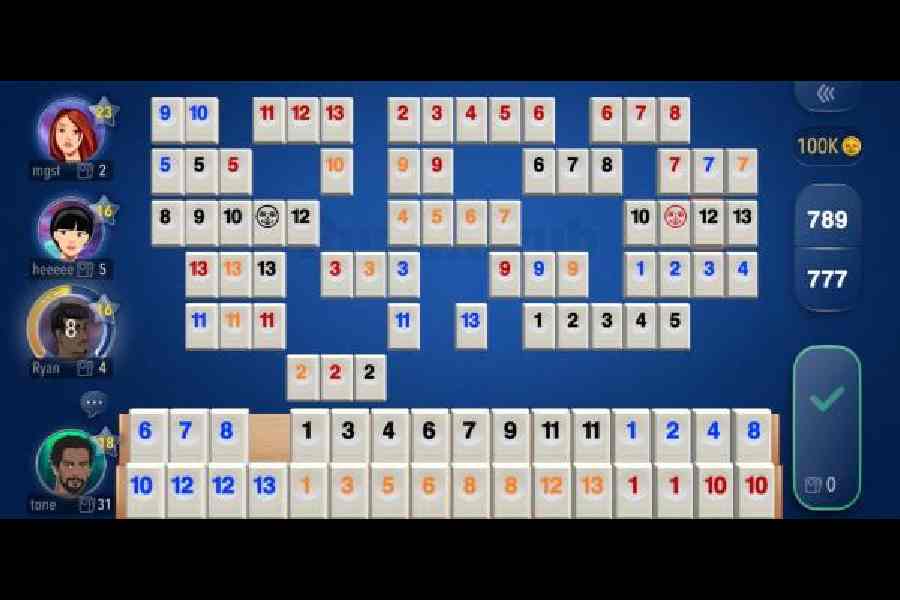I had my first shot with Rummikub at a board game session a few months ago, soon finding myself craving for more. Thankfully, I stumbled upon an online version, standing ready to serve my urge to play a few rounds anytime I want.
Originally a board game, Rummikub is a tile-based game in which you must get rid of all your tiles from your tile plate by forming sequences of numbers and playing them on the table. The first player to clear their tile plate with a valid board wins the game.
You form sequences depending on the numbers and colours. Meaning, each tile in a uniform sequence (7-7-7) must have different colours, and an ascending sequence (7-8-9) must share the same colour. From a UX standpoint, colour having a core function can make it difficult for colourblind players, which is a shame.
During your first turn, you must set down a sequence of numbers that add up to 30+ points. (This sequence can be 7-8-9-10, 10-10-10, 11-12-13, etc.) Traditional Rummikub does not allow the use of Jokers in the first turn; the smartphone version is the first to remove this constraint.
For context, Jokers can be used on any sequence, and can represent any number or colour. In a typical match, two Jokers are shuffled into the draw pile. Being able to use a Joker in the first turn makes a huge difference, since getting locked into an unplayable loop is a very real possibility under the traditional ruleset.
The games modes are simple — you can play online, practise with bots, play with a friend or take up tourneys. Apart from the practice mode, matches cost a minimum of 100 coins to enter. Run out of coins, and these game modes are locked away till you earn more — through ads, daily logins
and the like.
Personally, I don’t pay much mind to it; I neither compete nor play for coins, so the practice mode is perfect for me. But if your intent is to play a private match with a friend, you might want to note this.
The UX is a mixed bag. The game plays in landscape mode, so the UI elements and game assets compensate for that and grow smaller. For someone with huge fingers, it’s awkward to control these elements. So, it’s best to play on a tablet.
My biggest complaint is how turns offer you only 30 short seconds to read the table, connect numbers, lay the tiles, validate the board and finally pass the turn. To play devil’s advocate, extending this to a minute can extend the game for longer. Although, if the matchmaking had filters players could set, this wouldn’t be a problem, as other game modes allow you to do so.
VERDICT: It’s a keeper but best on tablets, and generally great in short bursts. I rate it a 7.5 out of 10.











